Photo-identification boat cruises initially targeting bottlenose and common dolphins were conducted in the Dzharylgach Bay, at depths between 5 and 9 m, and the sea area of the Karkinit Bay near the Dzharylgach Island, at depths between 3 and 12 m. Later, during the analysis, photo identifiable harbour porpoises were also revealed on the photographs.
Each survey was recorded, using a protocol of effort which included coordinates (every 15 minutes), route and navigation details, presence of other vessels, weather and other environmental conditions and references to cetacean sightings.
Also, each survey was recorded, using a protocol of cetacean sightings which included coordinates, time of each sighting, type of observations (visual vs. photo identification) and biological information with all the necessary details, including group size, composition and behavioural details, individual variation if detected.
Cetaceans were recorded both in the Dzharylgach Bay and in the sea area near the Dzharylgach Island.
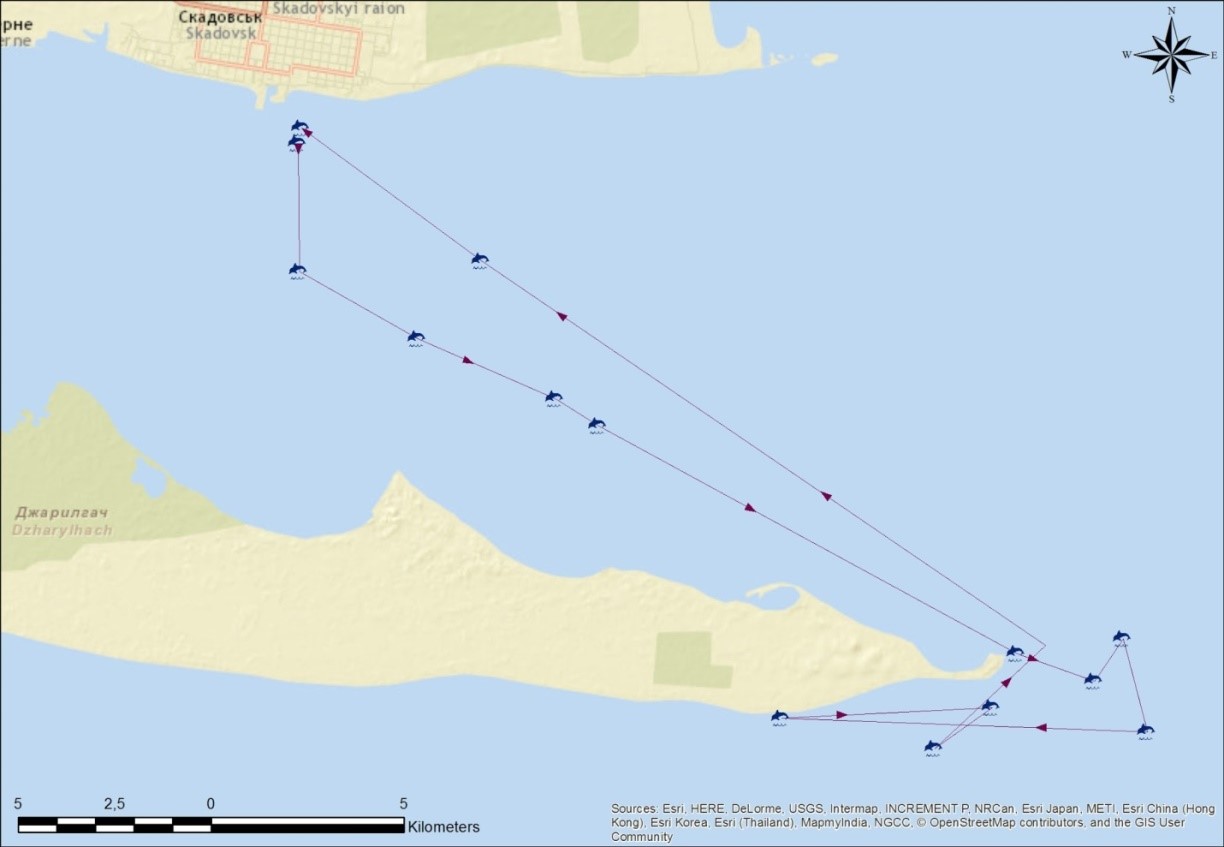 A photo-identification boat cruise in the Dzharylgach Area. August 2, 2016.
A photo-identification boat cruise in the Dzharylgach Area. August 2, 2016.
The line transect survey was conducted from the Callipso yacht in the Dzharylgach Bay and in the sea area south to the Dzharylgach Island on September 2, 2016. There were five transects in the bay covering 71 km2 and six transects in the sea covering 91 km2.
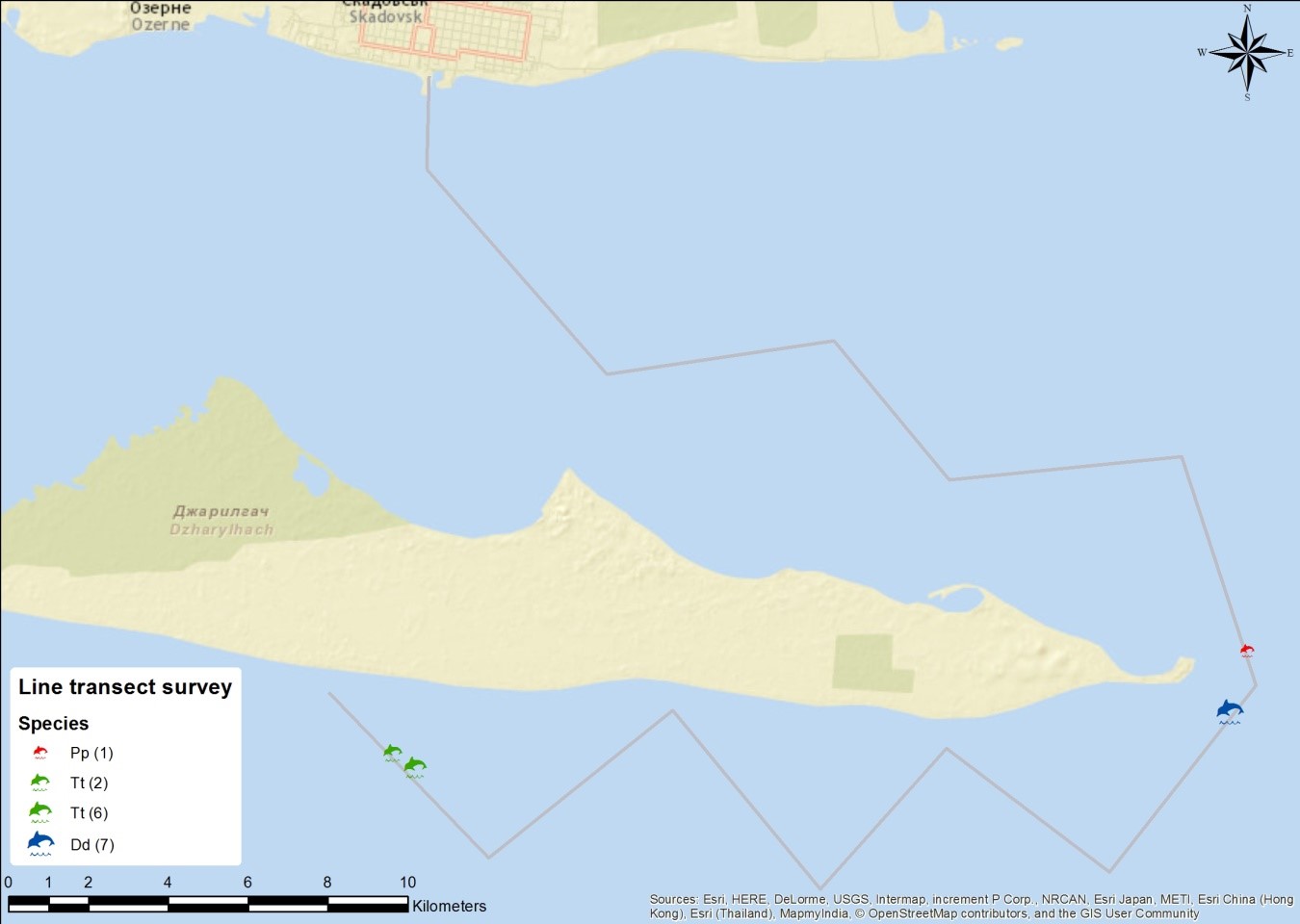 Line transect survey in the Dzharylgach area, September 2, 2016.
Line transect survey in the Dzharylgach area, September 2, 2016.
All three cetacean species of the Black Sea, the harbor porpoise (Phocoena phocoena), the common dolphin (Delphinus delphis) and the bottlenose dolphin (Tursiops truncatus) were recorded during the study. Two former species, harbour porpoises and common dolphins, were recorded in the Dzharylgach Bay where their permanent summer presence was confirmed.
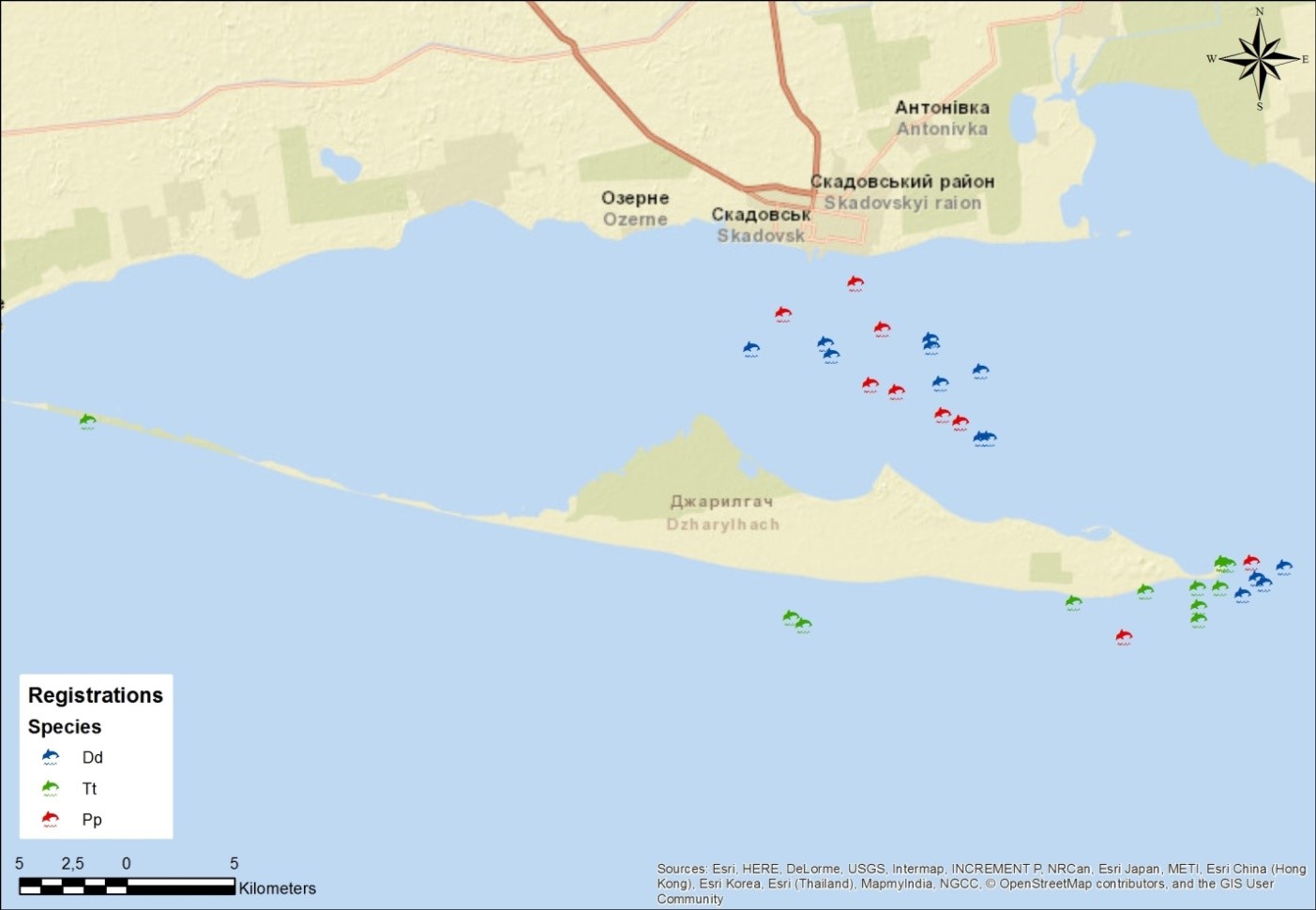 Summary of cetacean sightings in the Dzharylgach Bay and near the Dzharylgach Island in 2016: each symbol indicates a single or a group record.
Summary of cetacean sightings in the Dzharylgach Bay and near the Dzharylgach Island in 2016: each symbol indicates a single or a group record.
Harbour porpoises formed groups up to 8 animals, on average 2.7 (median = 2). They were observed both within and outside of the bay. The greatest groups were recorded in the centre of the bay, at depths near 5 m, and they tended to sea floor slopes, sometimes approaching the Skadovsk port area.
 Sightings of harbour porpoises in the Dzharylgach Bay and near the Dzharylgach Island; group sizes are indicated.
Sightings of harbour porpoises in the Dzharylgach Bay and near the Dzharylgach Island; group sizes are indicated.
Common dolphins occurred in groups from 2 to 10 individuals, 5.5 on average (median = 4). No solitary sightings were recorded. Group size in common dolphins was significantly higher (p<0.05) than in the other species. The greatest groups were recorded both in the middle of the bay and near the tip of the island.
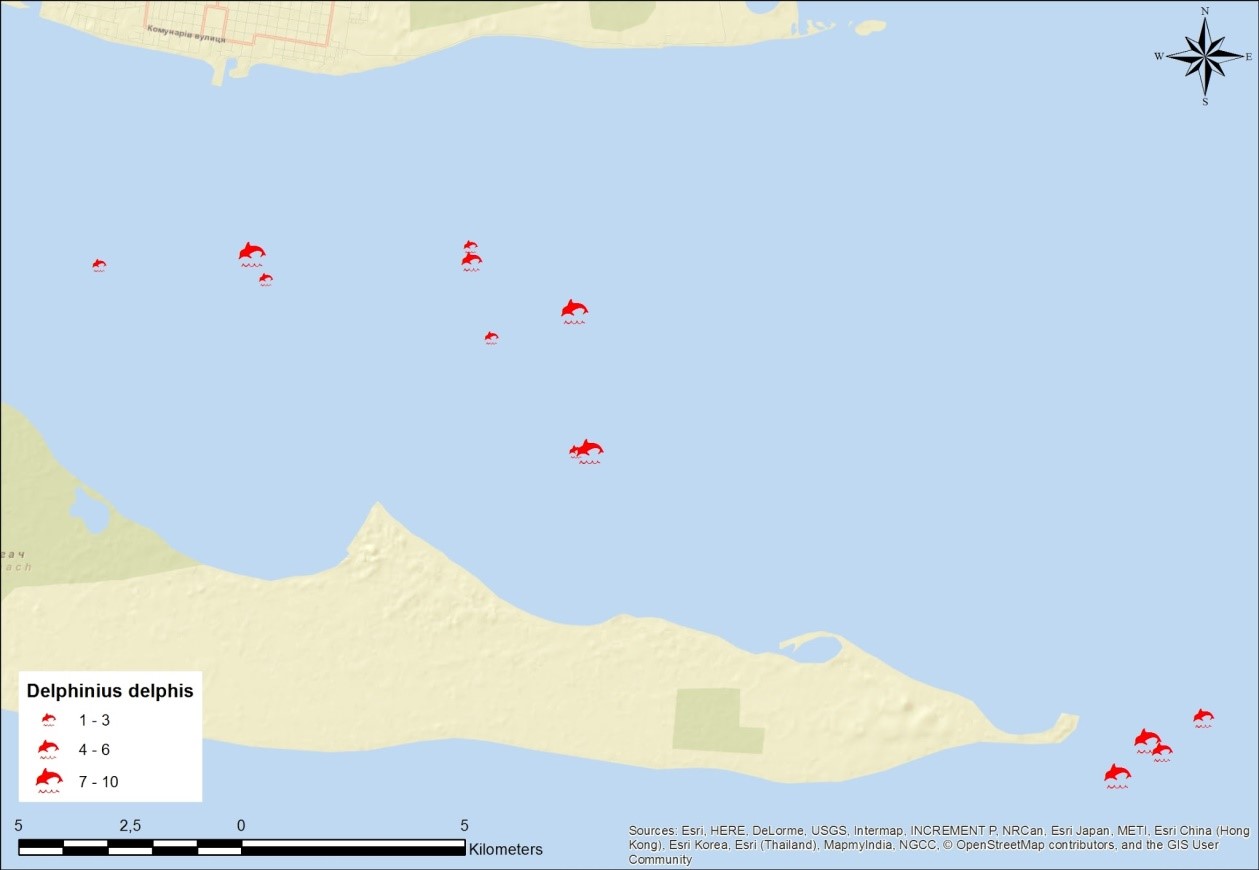 Sightings of common dolphins in the Dzharylgach Bay and near the Dzharylgach Island; group sizes are indicated.
Sightings of common dolphins in the Dzharylgach Bay and near the Dzharylgach Island; group sizes are indicated.
Bottlenose dolphins were recorded in groups up to six individuals, 3.1 on average (median = 2), and most of the sightings were pairs. There were juveniles in 27% of sightings: one of the groups of six dolphins contained three juveniles and, thus, was likely a mother-juvenile aggregation. All the sightings were on the open sea side or near the tip of the island rather than in the bay. Therefore, the bottlenose dolphin was the only species with clear spatial preferences.
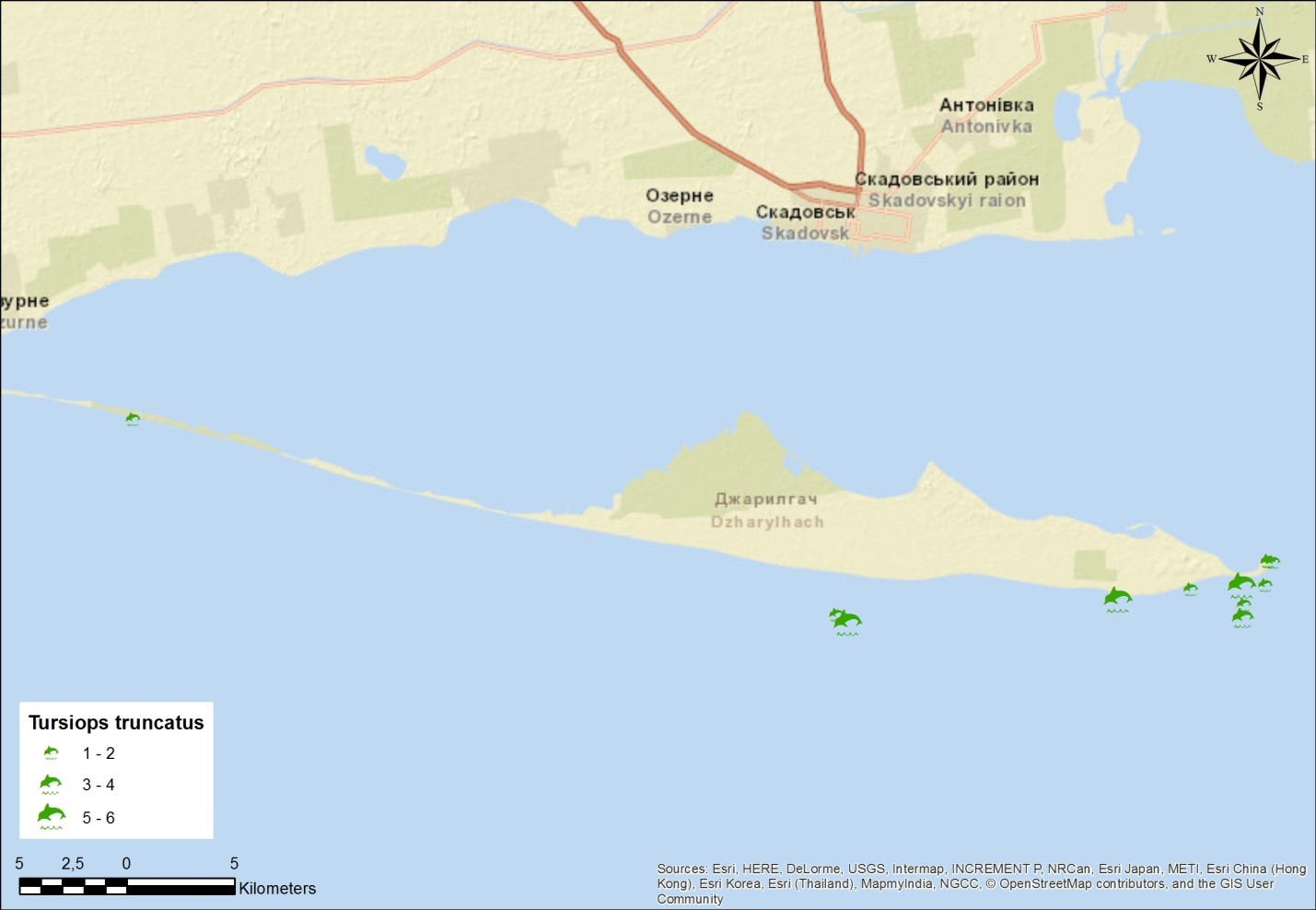 Sightings of bottlenose dolphins in the Dzharylgach Bay and near the Dzharylgach Island; group sizes are indicated.
Sightings of bottlenose dolphins in the Dzharylgach Bay and near the Dzharylgach Island; group sizes are indicated.
Thus, the sea area near the Dzharylgach Island, including the Dzharylgach Bay, was confirmed as an important summer habitat for all three species of cetaceans.
